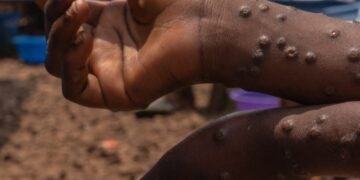Balancing drug imports and pharmaceutical R&D in Zambia
By Professor Munyonzwe Hamalengwa
THE government recently disclosed via a headline in the Times of Zambia (See excerpt accompanying this article) that the government spends K5 billion each year in importing pharmaceuticals into Zambia. That is a staggering amount to be spent on products manufactured in other countries like Egypt, India and others, products most of which we could have been making ourselves since independence which we obtained 60 years ago.
Not disclosed is how much we spend on Research and Development (R&D) locally to produce our own pharmaceuticals.
We have the capacity and blueprints to produce our own pharmaceuticals. In the unprecedented and unique book by Professor Kazhila Chinsembu ( photo of book cover accompanying this article) entitled Green Medicines: Pharmacy of Natural Products For HIV and Five Aids-Related Infections, 314 pages, 2016) Chinsembu lays it all out that Zambia and many other countries in the Global South have the raw materials with which to manufacture and be self-sufficient in Green Medicines and all pharmaceuticals that we need.
Although the book targets HIV and related infections, in scope it demonstrates that all ailments needing pharmaceuticals intervention are covered. There are many other studies as well and a lot of ink has poured forth on this topic. I have simply chosen the Chinsembu book because it is the best in my estimation on the potential for Zambia to have by now stopped spending K5 billion annually in importing pharmaceuticals if we had spent the equivalent or more on R& D.
We would also have cut on spending on outsourcing our politically and economically connected Zambians for treatment abroad on taxpayer’s money. How much Zambia spends on outsourcing and health tourism is not disclosed but it must be a staggering figure of more than K5 billion annually.
I have also chosen the Chinsembu book because Professor Chinsembu is an acclaimed academic who is still available as I write and he is currently the Director General of the Higher Education Authority (HEA) where he is evaluating the accreditation of Higher Education Institutions (HEI).
He should in my view be the Director General of a powerful R&D Institution in Green Medicines and Pharmaceutical Development or as a nominated Minister of Health. As an aside, I occasionally examine the list of various Ministers and Ambassadors we have appointed since independence.
I marvel at the mismatch and utter unsuitability of some of them. What was GBM [Geoffrey Bwalya Mwamba] doing as a Minister of Defence? What was Chishimba Kambwili doing as Minister of Foreign Affairs at some point, to name just a few. Does being a former wife of a President qualify you to be an Ambassador? These topics are for another day as I should not digress in my mission here.
A leading Tanzanian Botanist, Professor Keto Mshigeni said the following of Chinsembu’s book: “…there are many reasons to point to the need for humanity to look to plants as an alternative [to synthetics] as an abundant and as an appealing, yet largely neglected resource from which we can isolate novel biochemical to develop new and more efficacious drugs. This book is a critical turning-point in this intriguing journey. Indeed a voyage towards innovation and drug discovery…Through the expose of empirical and scientific data “Green Medicines” [the book] contains extraordinary and persuasive rhapsodies of acclaim for plants and other natural products that effectively work against HIV. [and other maladies].
The well-known Zambian of the famous Sondashi Formula, Dr Ludwig Sondashi has also highly recommended the Chinsembu book. The Sondashi formula if it was parlayed into fruition through government support would have by now freed Zambia from reliance on western largesse in treatment of many types of diseases including HIV.
Dr. John Sivah Kachimba a consultant Urologist at Levy Mwanawasa General Hospital wrote in a powerful third foreword among others that he hoped that Zambia “,took heed of the message of hope and promise that this seminal book has presented and take up the challenge to explore the bounty that nature has to offer in our fight against disease….”
Chinsembu’s book is divided into seven chapters, each chapter is self-contained and could constitute a book on its own:
Anti-HIV Natural Products; Skin Diseases; STIs; Oral Health; Tuberculosis and Malaria Medicines.
If Zambia deployed a lot of money in R&D on medicinal pharmaceuticals, there would be an explosion of collateral developments in intellectual property acquisitions and lessening of Zambian dependency on foreign importations of medicines. Corruption levels in pharmaceuticals would also hopefully fall.
Professor Munyonzwe Hamalengwa is the Dean of Law at Zambian Open University
























